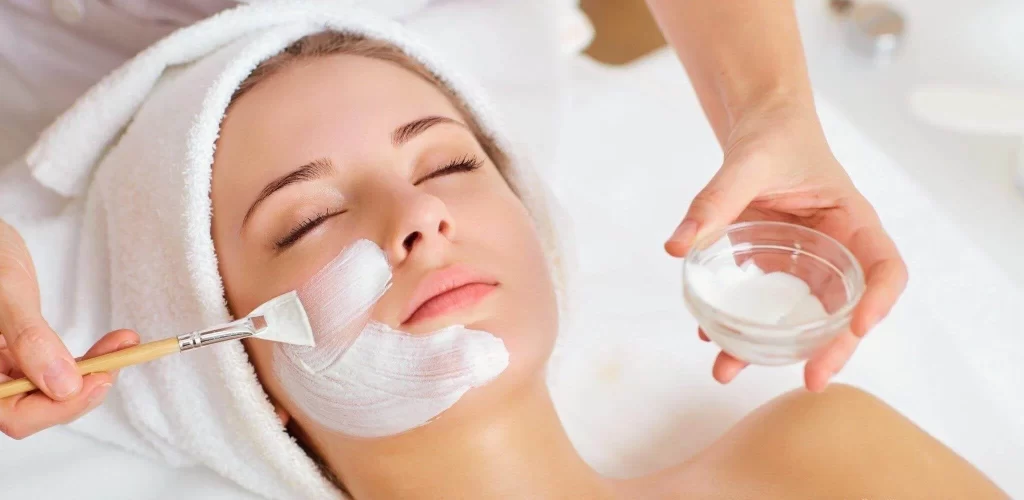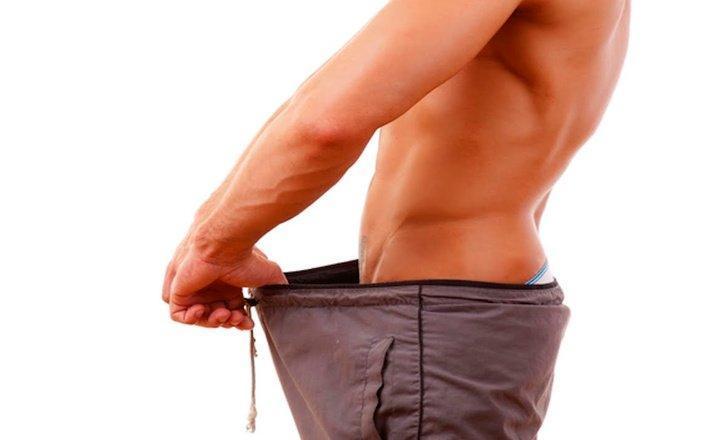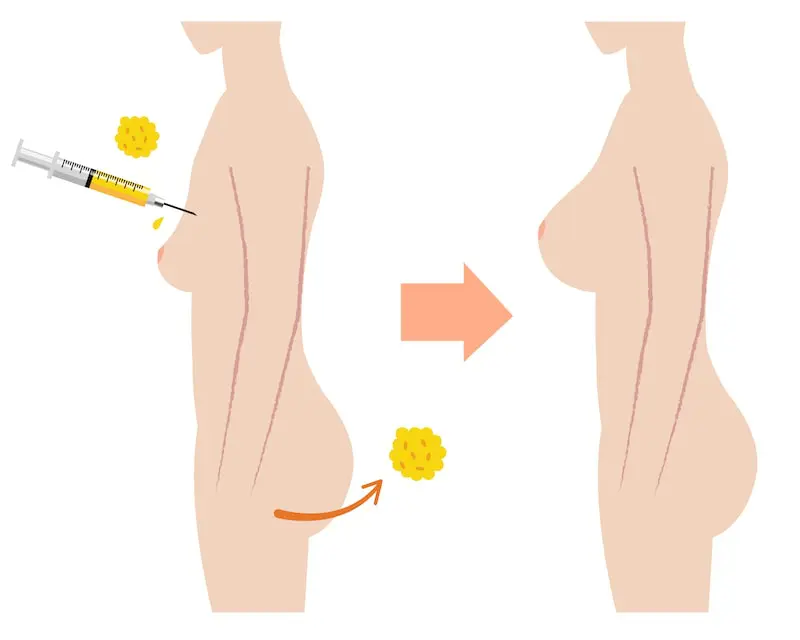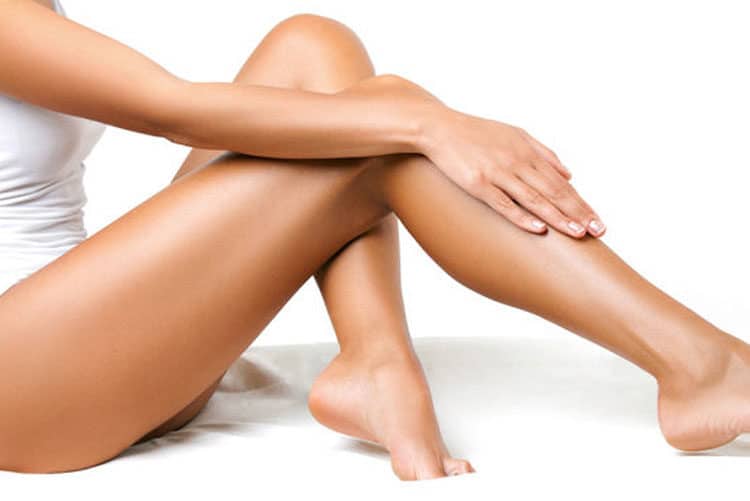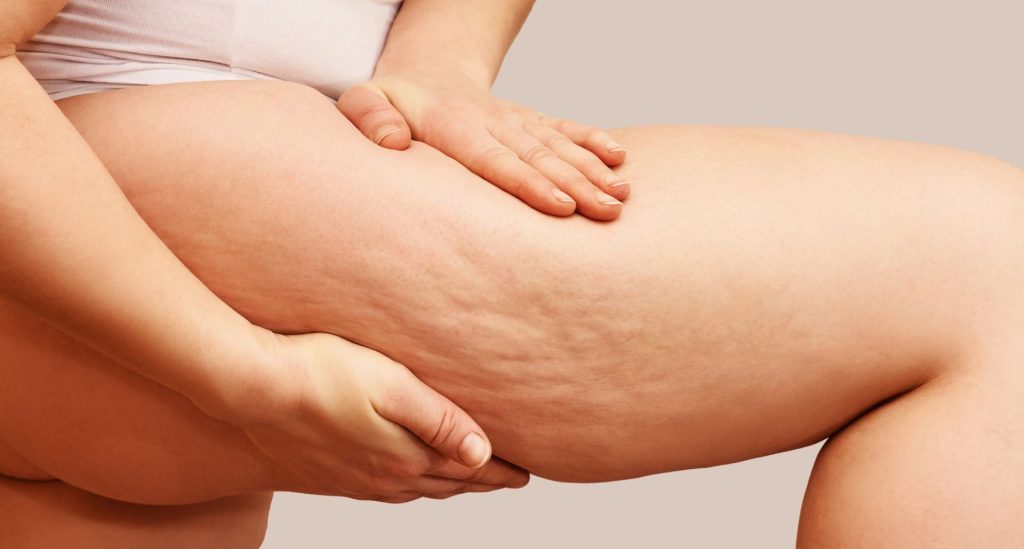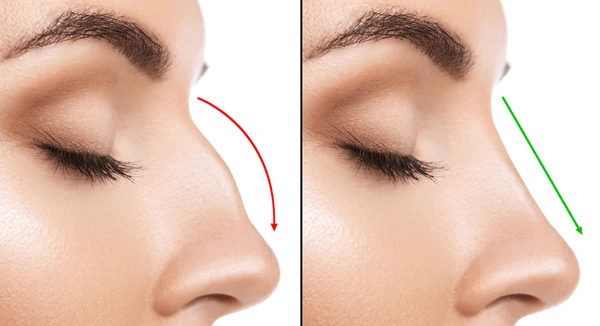Fat transfer and facial symmetry are game-changers in the world of aesthetics. This innovative procedure enhances your natural features, giving you a balanced and youthful appearance. By using your body’s own fat, it creates harmonious contours through facial symmetry enhancements that boost your confidence in this facial reshaping procedure with facial symmetry analyses, unlike facial bone surgery.
Imagine achieving that perfect symmetry without invasive surgeries or artificial fillers. Fat transfer not only sculpts but also rejuvenates, making it a popular choice for those seeking subtle yet impactful results. Whether you’re looking to enhance cheekbones or smooth out wrinkles, this technique offers a personalized approach to beauty. Discover how fat transfer can transform your look, enhancing facial contour symmetry while maintaining a natural vibe.
Key Takeaways
-
Understanding facial symmetry is crucial for aesthetic appeal; consider consulting with a specialist to assess your unique features.
-
Fat transfer can enhance facial symmetry, so explore this option if you seek a more balanced appearance.
-
Familiarize yourself with various fat grafting techniques to find the one that best suits your needs and goals.
-
Research the outcomes of fat grafting procedures to set realistic expectations about results and recovery times.
-
Prioritize patient satisfaction by choosing a qualified practitioner who values your aesthetic desires and provides personalized care.
-
Keep in mind that achieving facial symmetry is a process; be patient and open to adjustments throughout your journey.
Understanding Facial Symmetry
Definition
Facial symmetry, often enhanced by fat graft procedures, refers to the balance and proportion of facial features on both sides of the face. A symmetrical face has similar shapes and sizes of features, such as eyes, ears, and lips. This balance creates a sense of harmony. Many people view symmetry as an ideal standard of beauty.
Influences on Symmetry
Genetic factors greatly influence facial symmetry. Traits inherited from parents can determine the structure of one’s face. Environmental influences also play a role. For example, exposure to sunlight can lead to skin changes that affect symmetry over time, similar to the results of a fat graft.
Aging impacts facial symmetry as well. As people grow older, skin loses elasticity. This can cause sagging or drooping in certain areas, leading to facial asymmetry, especially after a fat graft. Lifestyle choices like smoking or poor diet can worsen these effects.
Beauty and Attractiveness
Many studies link facial symmetry to perceived beauty and attractiveness. People often find symmetrical faces more appealing. This preference may stem from evolutionary factors. In nature, symmetry can indicate health and genetic fitness.
Facial symmetry analyses have shown that individuals with higher facial symmetry scores are often rated as more attractive. These analyses measure the degree of facial contour symmetry and similarity between the left and right sides of the face. Researchers use various tools and software for accurate measurements.
Importance in Aesthetics
In aesthetic practices, achieving facial contour symmetry is crucial. Many procedures aim to correct facial asymmetry through techniques like fat transfer or fillers. These methods help restore balance in facial contours.
t tissue symmetry is also important for overall appearance. When one side appears fuller than the other, it can create an unbalanced look and affect facial contour symmetry. Addressing these facial contour irregularities can enhance a person’s confidence.
Types of Facial Shapes
Different facial shapes exist, such as oval, round, square, and heart-shaped. Each shape has unique characteristics that contribute to individual beauty standards. However, asymmetries can occur within any type of shape.
Facial shape modifications may involve surgical or non-surgical options. Patients often seek these solutions for various reasons, including enhancing their natural features or correcting deformities.
Importance of Facial Symmetry
Psychological Impact
Facial symmetry significantly affects self-esteem. Studies show that people with symmetrical faces often feel more confident. They receive more positive attention from others. This can boost their overall mood and outlook on life. Individuals may seek facial symmetry improvements through various methods, including facial plastic surgery. These enhancements can lead to a stronger sense of self-worth.
Many individuals report feeling happier after undergoing procedures aimed at improving facial symmetry. For example, someone who feels insecure about their appearance might choose to enhance their features. This decision often leads to increased confidence in social settings.
Health and Vitality
Facial symmetry is commonly linked to perceptions of health and vitality. Research indicates that symmetrical faces are often seen as more attractive. This perception stems from evolutionary factors. People tend to associate symmetry with genetic health and reproductive fitness.
In nature, many animals exhibit symmetrical features as indicators of good health. Humans are not different in this regard. A symmetrical face can suggest well-being, making individuals appear more vibrant and youthful. This association drives many to pursue facial rejuvenation surgery or other cosmetic options.
Social Interactions
Symmetry plays a crucial role in social interactions. First impressions are often formed within seconds. A symmetrical face can create a favorable initial impression. This can influence how others perceive an individual’s personality and abilities.
People often judge attractiveness based on facial features during first encounters. Symmetrical faces are frequently associated with traits like kindness and intelligence. These judgments can affect personal and professional relationships alike.
Research shows that individuals with higher facial symmetry tend to experience better social outcomes. They may find it easier to make friends or network professionally due to the positive perceptions surrounding their appearance.
Overview of Fat Transfer
Process Steps
Fat transfer involves three main steps: harvesting, processing, and reinjection. First, doctors collect fat from a donor site on the body, often the abdomen or thighs. They use liposuction to remove this fat. This process is minimally invasive and usually requires only local anesthesia.
Next, the harvested fat undergoes processing. Surgeons purify the fat to remove excess fluids and debris. This step ensures that only healthy fat cells are used for the transfer.
Finally, doctors inject the processed fat into specific areas of the face. Using a fine needle, they carefully place the fat to enhance volume and improve contour. This technique allows for precise adjustments to achieve better facial symmetry.
Benefits of Autologous Fat
Using autologous fat for grafting has significant advantages. Since this fat comes from the patient’s own body, there is a lower risk of rejection. The immune system recognizes these cells as its own. This reduces complications associated with foreign substances.
Another benefit is the natural look and feel of the results. Patients often prefer this method over synthetic fillers because it integrates well with existing tissues. The body can absorb some of the injected fat over time, leading to more gradual changes.
Common Treatment Areas
Fat transfer can enhance several areas of the face. The cheeks are a common target for improving volume. Many patients seek this treatment to restore youthful fullness.
The under-eye area also benefits from fat transfer. It can help reduce hollowness and dark circles. Filling in these areas creates a smoother appearance.
Lips are another popular area for enhancement. Fat injections can add volume and shape without using fillers.
Finally, the jawline can be contoured using fat transfer. This helps define facial structure and improves overall balance.
Patients appreciate these treatments because they provide long-lasting results with minimal downtime.
Techniques for Fat Grafting
Harvesting Methods
Fat grafting procedures start with harvesting fat from the patient’s body. This is usually done through liposuction. Surgeons can extract fat from areas like the abdomen, thighs, or flanks. The choice of area depends on the patient’s unique anatomy and aesthetic goals.
After harvesting, the fat must be processed. This processing involves removing impurities, such as blood and oil, to ensure quality. The purification of harvested fat is crucial. It affects how well the fat survives once injected into the face.
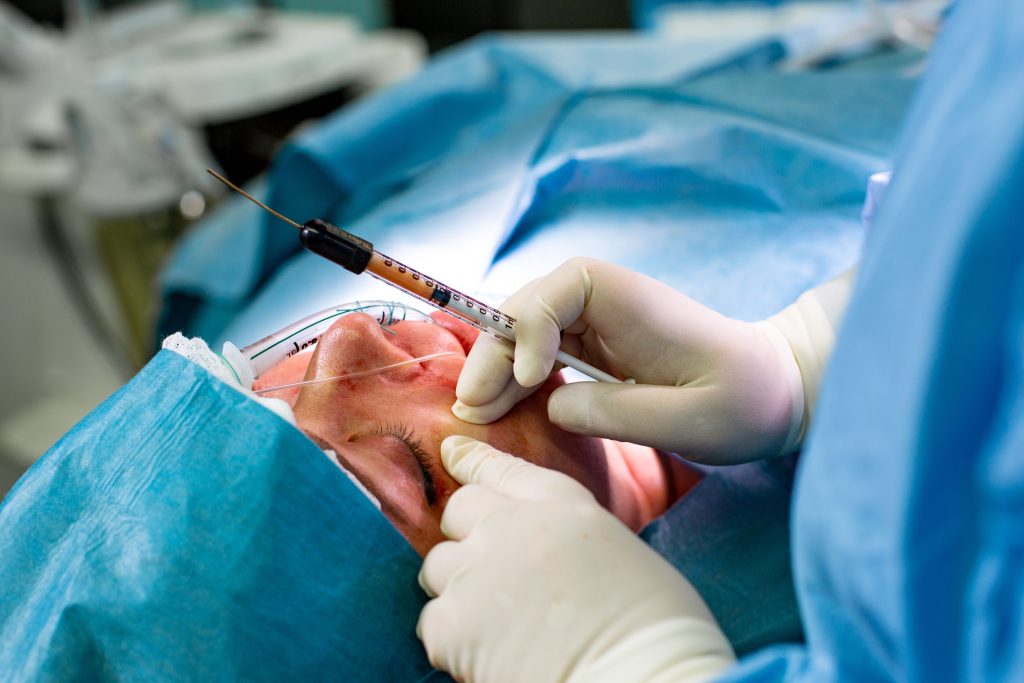
Processing Fat
Careful processing of the harvested fat enhances its viability. Surgeons often use centrifugation to separate viable fat cells from unwanted materials. This step ensures that only healthy fat cells are used in the procedure.
Using high-quality fat increases the chances of successful outcomes in facial fat grafting. If the fat is poorly processed, it may lead to complications or uneven results. Thus, attention to detail during this phase is vital for achieving desired facial symmetry.
Injection Techniques
Precise injection techniques play a significant role in facial contouring. Surgeons utilize various methods to inject the purified fat into specific areas of the face. They often use a small cannula for this purpose. A cannula allows for controlled placement of fat.
Surgeons may employ a technique called supplemental fat grafting during the procedure. This involves adding more fat in certain areas to enhance volume and improve symmetry. Careful layering of fat helps create a natural look.
Intraoperative fat grafting refers to making adjustments during surgery based on real-time observation. This flexibility allows surgeons to fine-tune results as they work. Achieving balance is essential for facial aesthetics.
Importance of Symmetry
Facial symmetry is an important aspect of beauty. Many patients seek facial grafting specifically for this reason. By using autologous fat grafting, surgeons can enhance features while maintaining natural proportions.
Secondary fat grafting may be necessary if initial results are not satisfactory. This follow-up procedure allows further refinement and improvement of facial contours.
Patients should discuss their goals with surgeons before undergoing facial fat grafting sessions. Understanding each step helps manage expectations and ensures satisfaction with the outcome.
Improving Symmetry with Fat Transfer
Correcting Asymmetries
Fat transfer can effectively correct facial asymmetries. It adds volume to areas that lack fullness. For example, if one cheek appears flatter than the other, fat can be injected into the deficient area. This creates a more balanced appearance. The technique is useful for facial reshaping patients seeking to enhance their features.
Fat grafting is often used in conjunction with other procedures. A surgical facelift may be performed alongside fat transfer to achieve comprehensive results. The combination can improve both skin laxity and facial contours. Patients typically see significant improvements in symmetry after these treatments.
Planning with Technology
Computerized photogrammetric analyses play a key role in planning fat transfer procedures. This technology captures detailed images of the face. Surgeons use these images to assess symmetry before treatment. They can identify specific areas that need enhancement.
After the procedure, these analyses help evaluate outcomes. Surgeons compare pre- and post-operative images to measure improvements. This objective approach ensures that the results meet patient expectations.
Multiple Sessions Needed
Achieving optimal results may require multiple sessions. Fat transfer does not always yield permanent results in one visit. Some of the transferred fat may be reabsorbed by the body over time. Thus, patients might need follow-up procedures to maintain symmetry.
Surgeons often recommend a staged approach. They will monitor progress and suggest additional treatments as needed. This careful planning helps ensure lasting improvements in facial balance.
Benefits of Fat Transfer
Fat transfer offers various benefits for facial symmetry enhancement:
-
Natural Appearance: Using the patient’s own fat reduces the risk of rejection.
-
Minimal Scarring: The technique involves small incisions, leading to less visible scars.
-
Dual Benefit: Patients can achieve body contouring while enhancing their facial features.
Overall, fat transfer is a valuable option for those looking to improve facial symmetry. It combines advanced techniques with personalized care for effective outcomes.
Outcomes of Fat Grafting Procedures
Statistical Improvements
Studies show that postoperative fat grafting can significantly enhance facial symmetry. A study published in the Journal of Plastic and Reconstructive Surgery found that 85% of patients reported noticeable improvements in facial balance after the procedure. This indicates a strong success rate for those seeking facial rejuvenation.
Another research highlighted that patients experienced an average increase of 30% in perceived symmetry. These numbers suggest that fat grafting effectively addresses asymmetries caused by aging or previous injuries.
Longevity of Results
Results from fat grafting procedures tend to be stable over time. Many patients maintain improved facial symmetry for up to 12 months post-surgery. A follow-up study conducted one year after the procedure showed that 70% of participants retained their results. This stability is a key factor for individuals considering this type of surgery.
Factors contributing to long-lasting results include proper technique and patient care during recovery. Surgeons emphasize the importance of following postoperative guidelines to ensure optimal healing and enduring outcomes.
Influencing Factors
Several factors can affect the success of fat transfer procedures. Age plays a significant role in how well patients respond. Older adults may experience less effective results due to decreased skin elasticity and fat volume.
Previous surgeries can also impact outcomes negatively. Patients who have undergone multiple procedures may have scar tissue, making it harder for the fat to integrate successfully.
Surgeons often evaluate these factors before recommending fat grafting. Understanding individual circumstances helps tailor treatment plans for better results.
Enhancing Aesthetics through Fat Transfer
Smoothing Contours
Fat transfer, also known as facial fat grafting, can significantly enhance facial aesthetics. This procedure involves taking fat from one area of the body and injecting it into the face. The primary goal is to smooth out contours and reduce wrinkles.
Patients often notice an improvement in their overall appearance. For example, sunken cheeks can be filled, giving a youthful look. Similarly, hollows under the eyes can be corrected. This rejuvenation helps restore a natural balance to facial features.
Natural-Looking Results
Personalized fat grafting techniques ensure that results appear natural. Surgeons assess each patient’s unique facial structure before performing the procedure. They select the appropriate amount of fat to use based on individual needs.
This attention to detail leads to subtle enhancements rather than dramatic changes. Many patients are pleased with their results, feeling more confident in their appearance. They appreciate that the changes blend seamlessly with their existing features.
Body Contouring Benefits
Fat transfer offers a dual benefit by providing body contouring from harvesting sites. Areas like the abdomen or thighs can be selected for fat removal. This means patients not only improve their facial aesthetics but also achieve a slimmer profile elsewhere.
The process begins with liposuction to collect excess fat. Once harvested, this fat undergoes purification before being injected into the face. The result is a more youthful look along with improved body shape.
Safety and Recovery
Safety is a crucial aspect of any cosmetic procedure. Fat transfer has a good safety record when performed by qualified professionals. Recovery times vary but are generally shorter than many other surgical procedures.
Patients might experience some swelling or bruising after the injections. However, these effects typically subside within a few days. Most individuals can return to regular activities shortly after treatment.
Long-Lasting Effects
The longevity of results from fat transfer is another appealing factor. While some of the injected fat may be absorbed by the body, a significant portion remains long-term. This creates lasting improvements in facial rejuvenation.
Many patients enjoy their enhanced appearance for years after the procedure. Regular follow-ups with healthcare providers help maintain optimal results and address any concerns.
Patient Satisfaction and Results
High Satisfaction Rates
Patients report high levels of satisfaction after fat transfer procedures. Many appreciate the cosmetic results that enhance their facial symmetry. A study showed that approximately 85% of patients felt pleased with their outcomes. This improvement often leads to increased confidence and a more youthful appearance.
Facial symmetry plays a crucial role in how people perceive beauty. Patients notice a significant change in their facial aesthetics after the procedure. The results can last for several months, depending on various factors such as age and volume of fat transferred.
Setting Realistic Expectations
Setting realistic expectations is vital for patient satisfaction. Not every patient will achieve the same results. Some may require follow-up sessions to maintain their desired look. Understanding this helps manage hopes and prepares patients for potential future treatments.
Surgeons often discuss what patients can expect during consultations. They explain that individual factors, like age and skin quality, can affect results. This conversation ensures patients are informed about possible outcomes.
Importance of Patient Education
Patient education plays a significant role in achieving satisfactory outcomes. Educated patients tend to have better experiences and results. They understand the procedure, recovery time, and necessary aftercare.
Surgeons provide information through brochures or one-on-one discussions. This knowledge helps patients make informed decisions about their treatment options. It also encourages them to ask questions, fostering a supportive environment.
Studies indicate that educated patients are more likely to report positive experiences. They feel empowered and involved in their care process. This involvement leads to better adherence to post-operative guidelines.
Predictors of Success
Several independent predictors influence patient satisfaction with fat transfer procedures. These include:
-
Volume of fat transferred
-
Age of the patient
-
Site of fat extraction
-
Number of sessions required
Understanding these predictors can help patients prepare for their journey. For instance, older patients may need more volume to achieve similar results compared to younger individuals.
Surgeons use these factors to tailor treatments for each patient. Personalized plans lead to improved youthful facelift results and overall satisfaction.
Final Remarks
Fat transfer can significantly enhance facial symmetry, giving you a more balanced and youthful appearance. Understanding the techniques and outcomes of fat grafting is essential for making informed decisions. With proper expertise, you can achieve remarkable results that boost your confidence and satisfaction.
If you’re considering fat transfer to improve your facial symmetry, consult with a qualified professional. They can guide you through the process and tailor it to your needs. Don’t wait to take the first step towards a more harmonious look. Explore your options today and embrace the transformation that awaits you!
Frequently Asked Questions
What is facial symmetry?
Facial symmetry refers to how well the two halves of the face mirror each other. It plays a crucial role in perceived beauty and attractiveness.
Why is facial symmetry important?
Facial symmetry enhances aesthetic appeal and can boost self-confidence. It often contributes to a more harmonious and balanced appearance.
What is fat transfer?
Fat transfer, or fat grafting, involves removing fat from one part of the body and injecting it into another area, such as the face. This technique improves volume and contour.
How does fat transfer improve facial symmetry?
Fat transfer can correct asymmetries by adding volume to specific areas of the face, creating a more balanced and harmonious look.
What techniques are used for fat grafting?
Common techniques include liposuction for fat extraction and precise injection methods to ensure even distribution in targeted facial areas.
What are the outcomes of fat grafting procedures?
Outcomes vary but typically include improved facial volume, enhanced symmetry, and a more youthful appearance. Most patients report high satisfaction levels.
Is patient satisfaction high with fat transfer?
Yes, many patients express high satisfaction due to natural-looking results and minimal recovery time. Individual experiences may vary based on technique and expectations.











